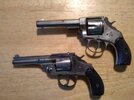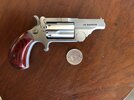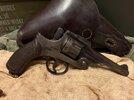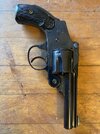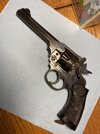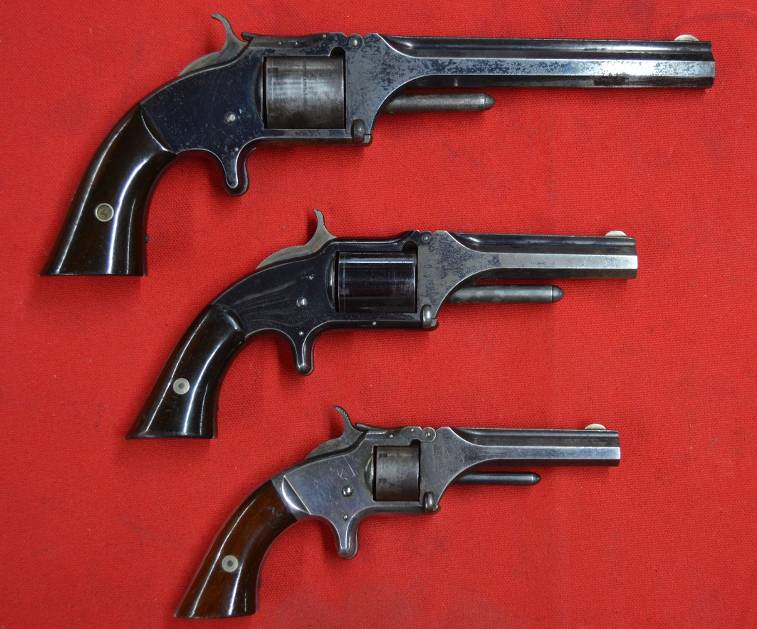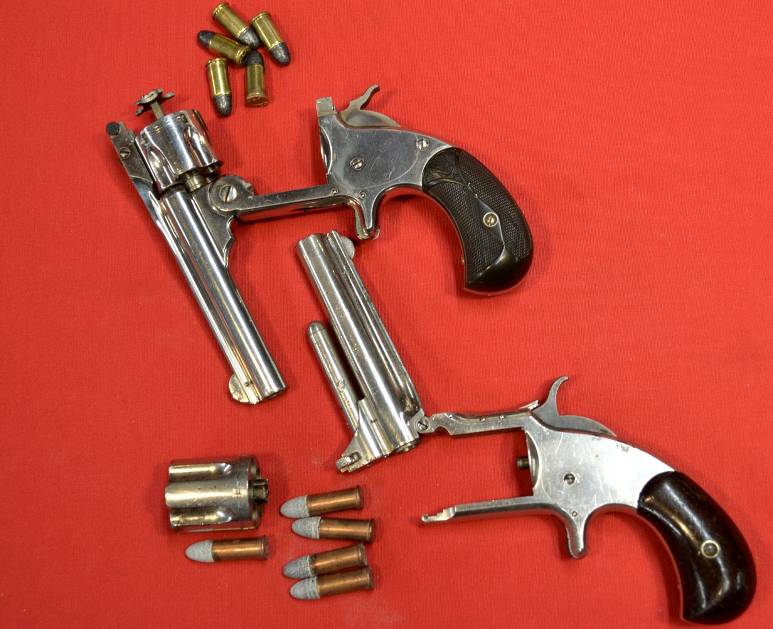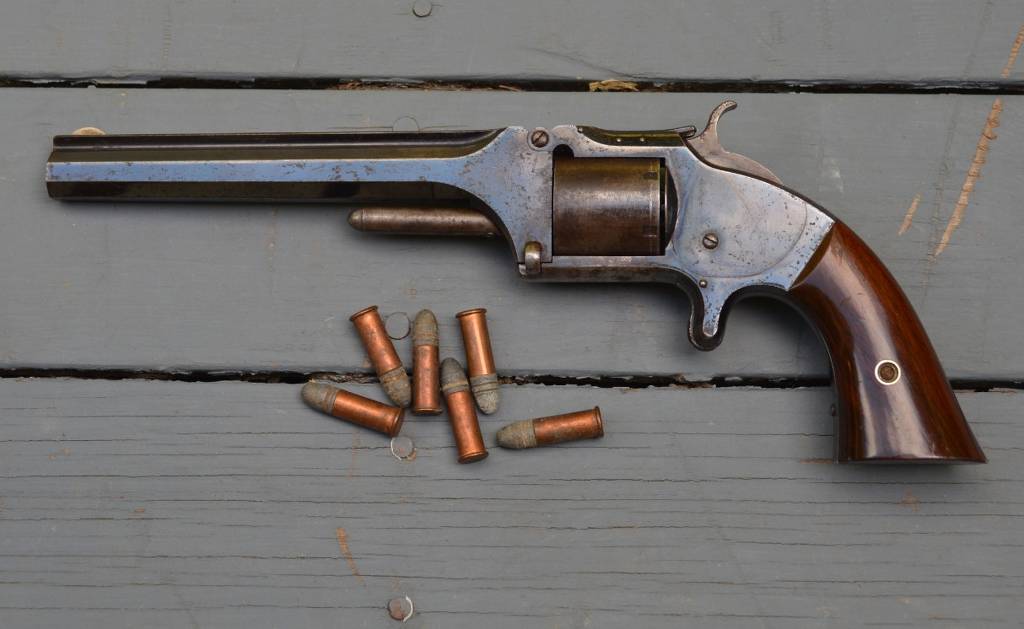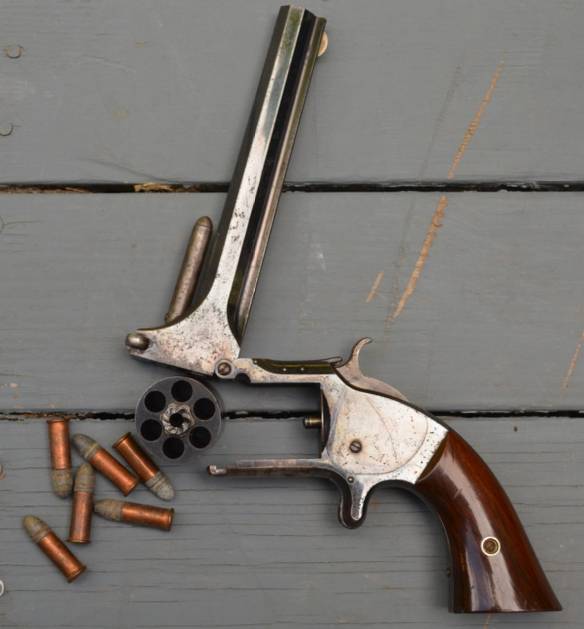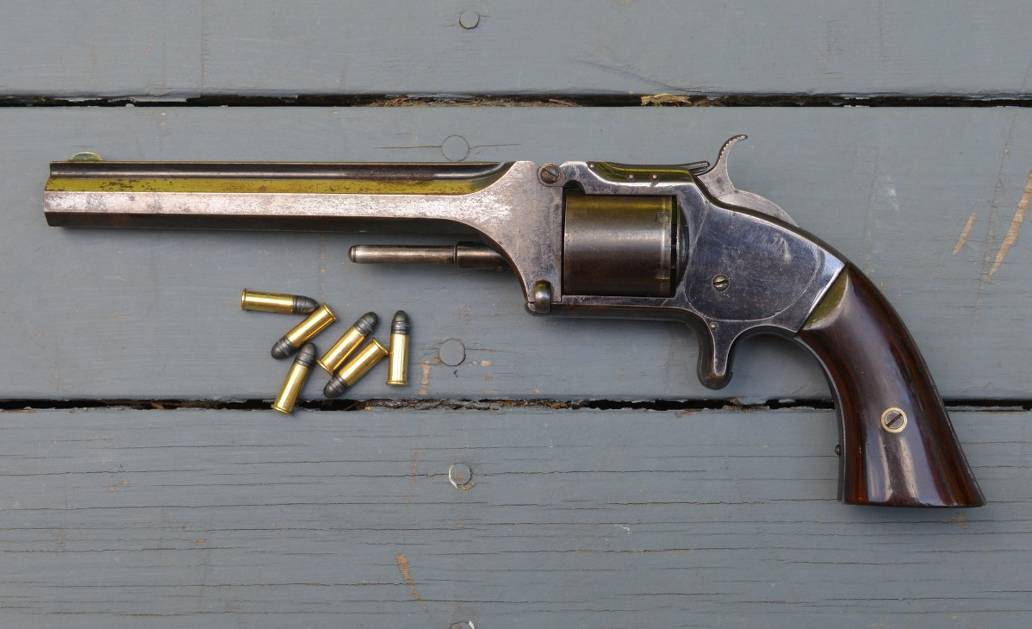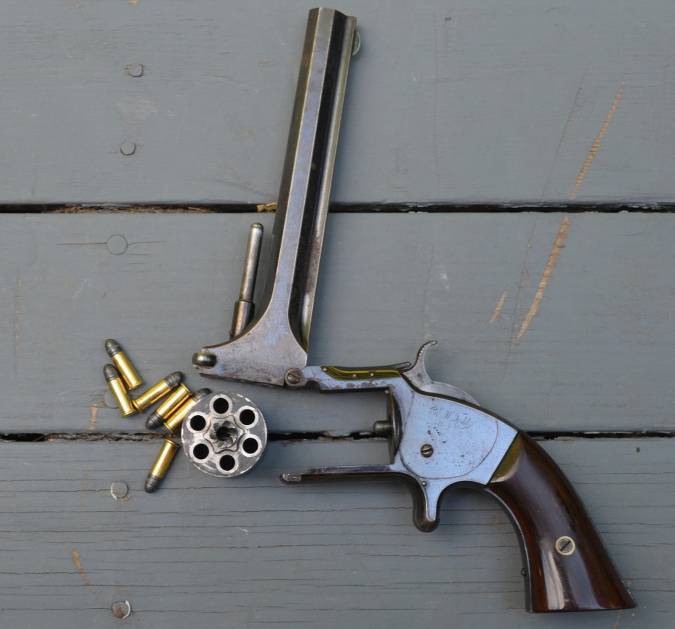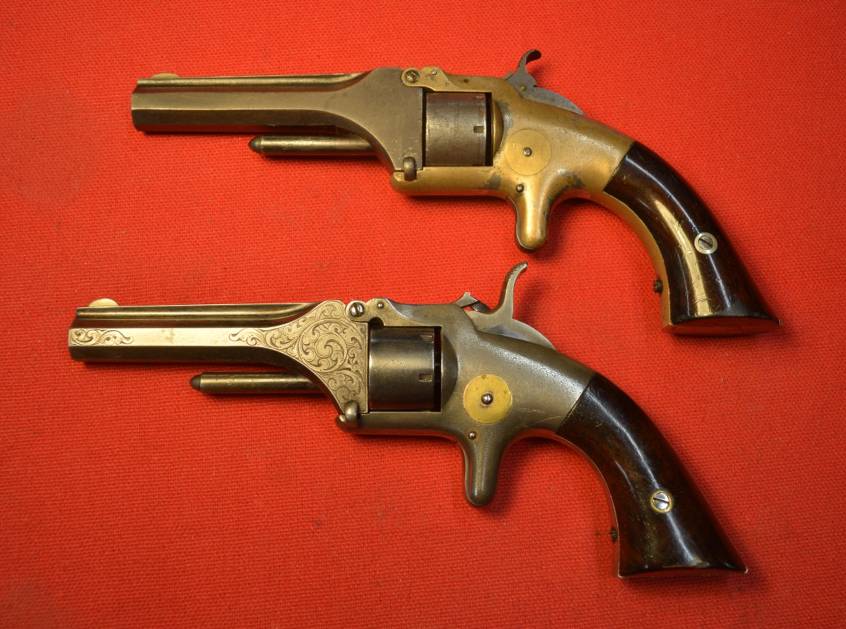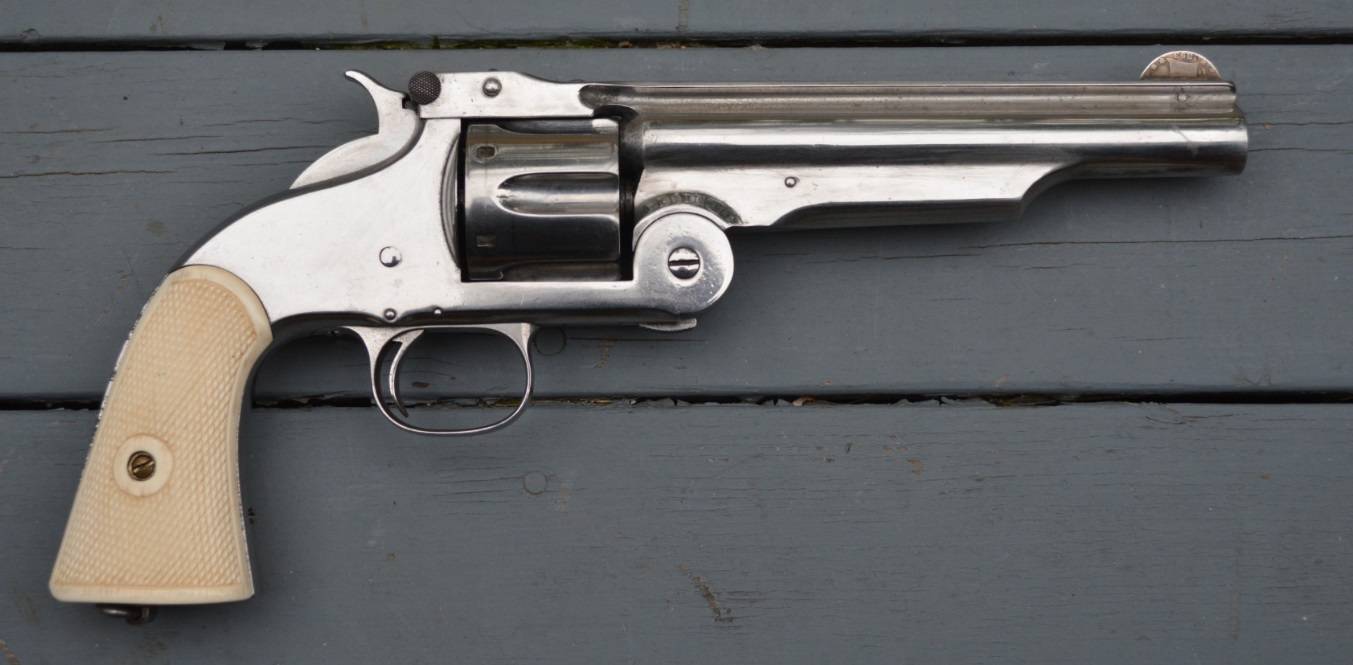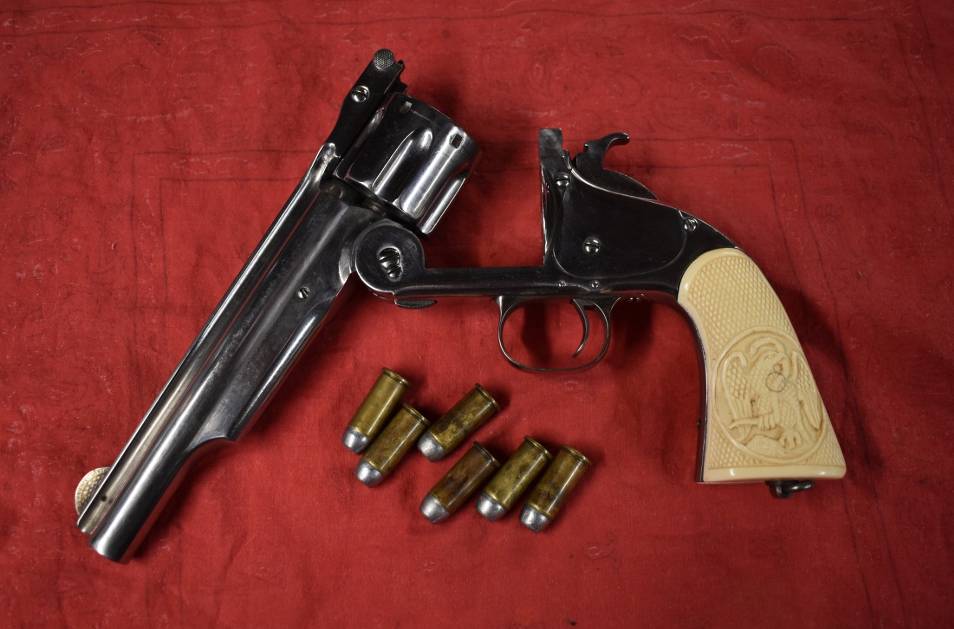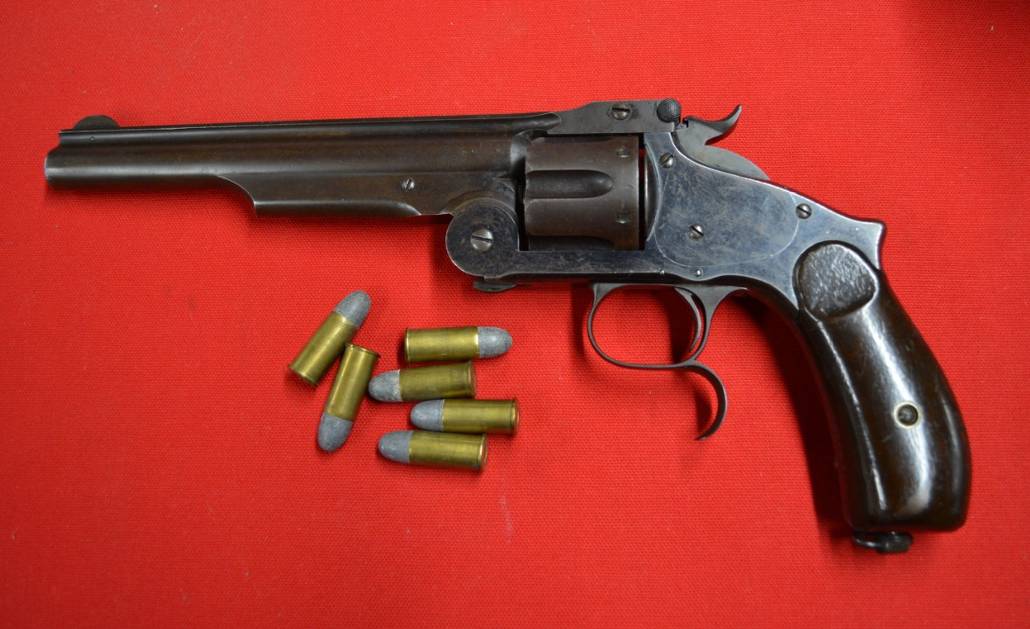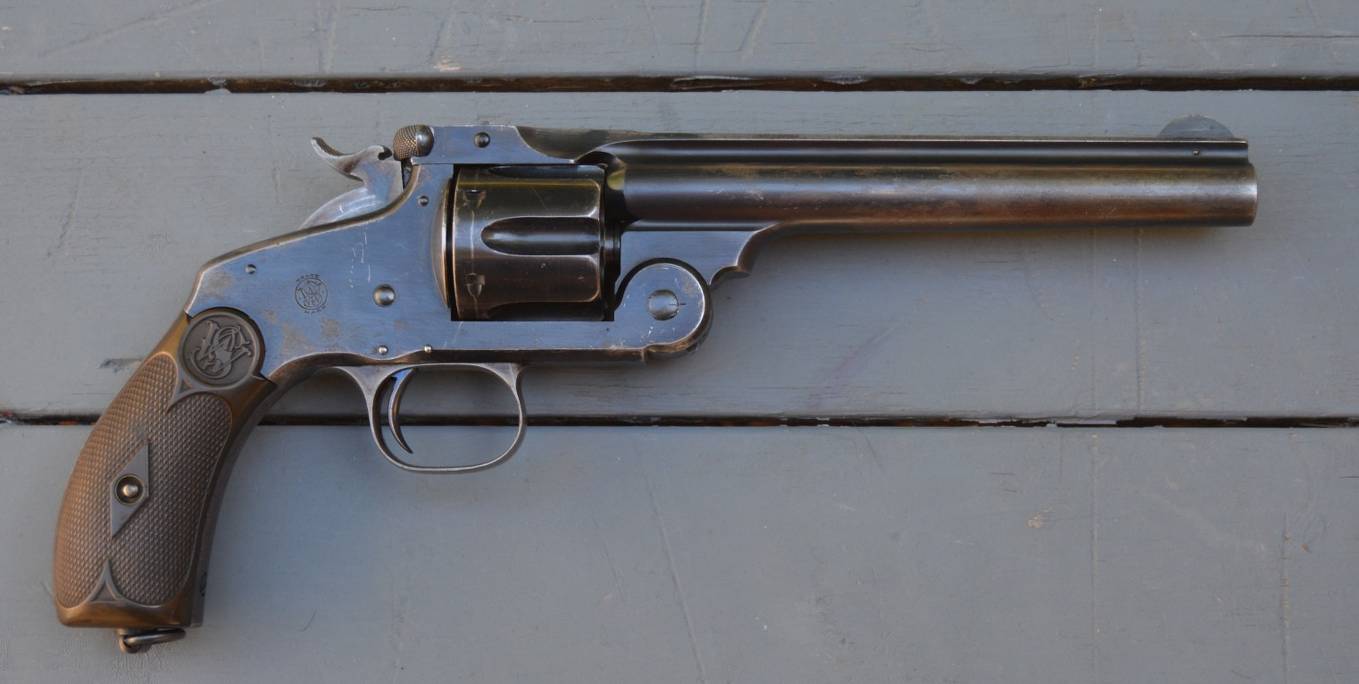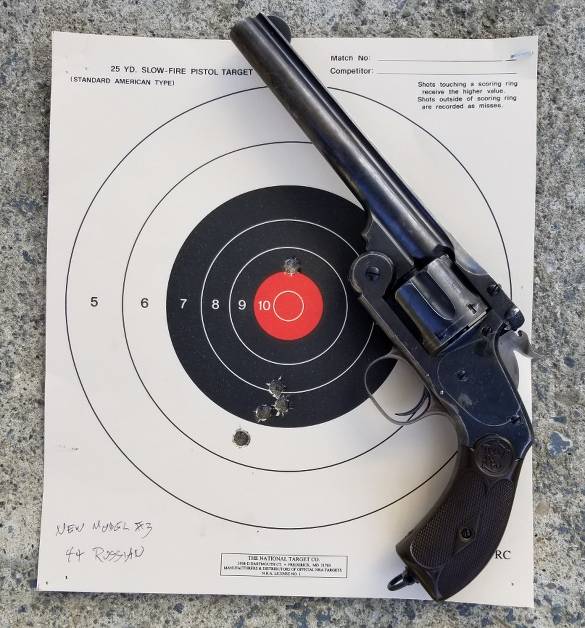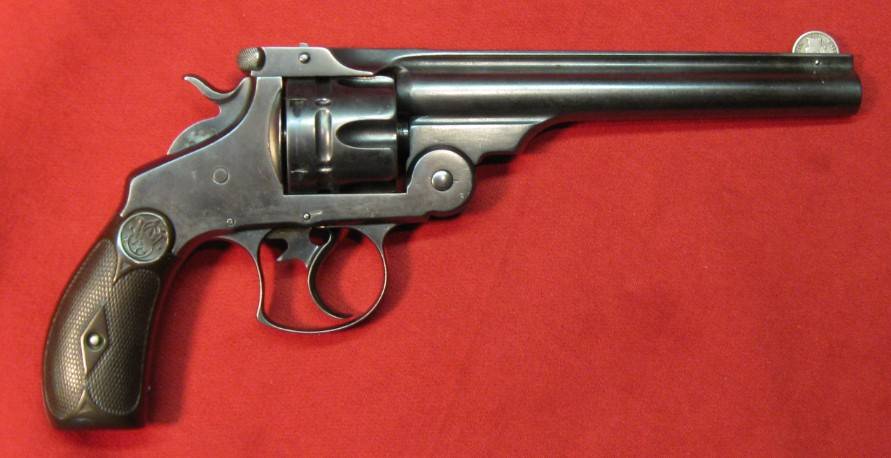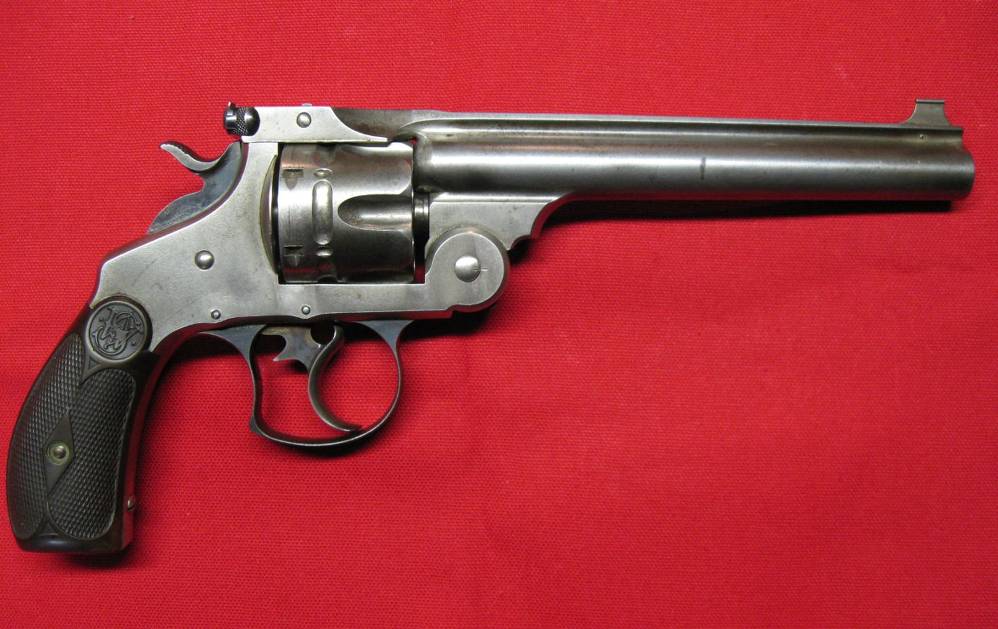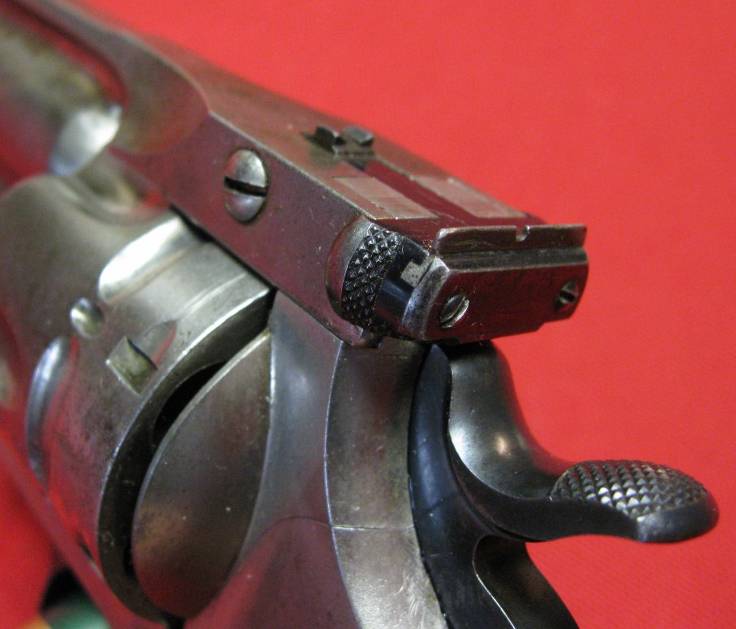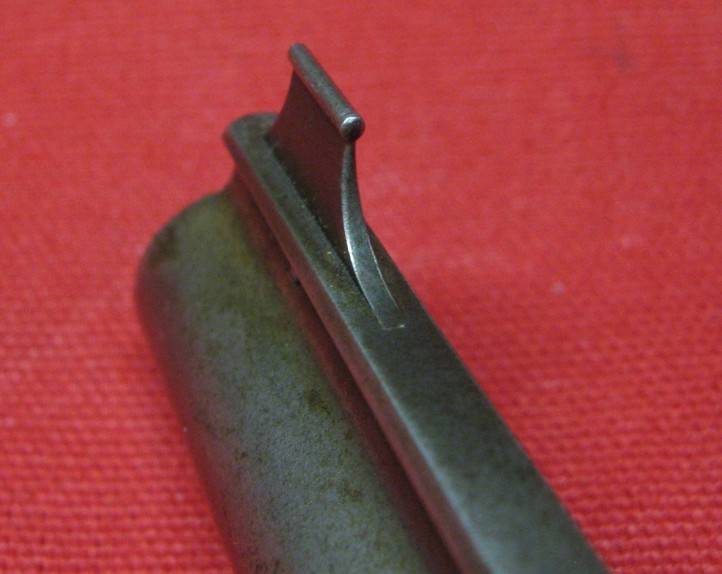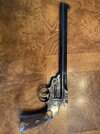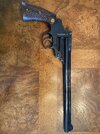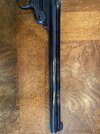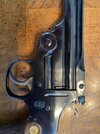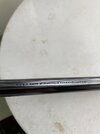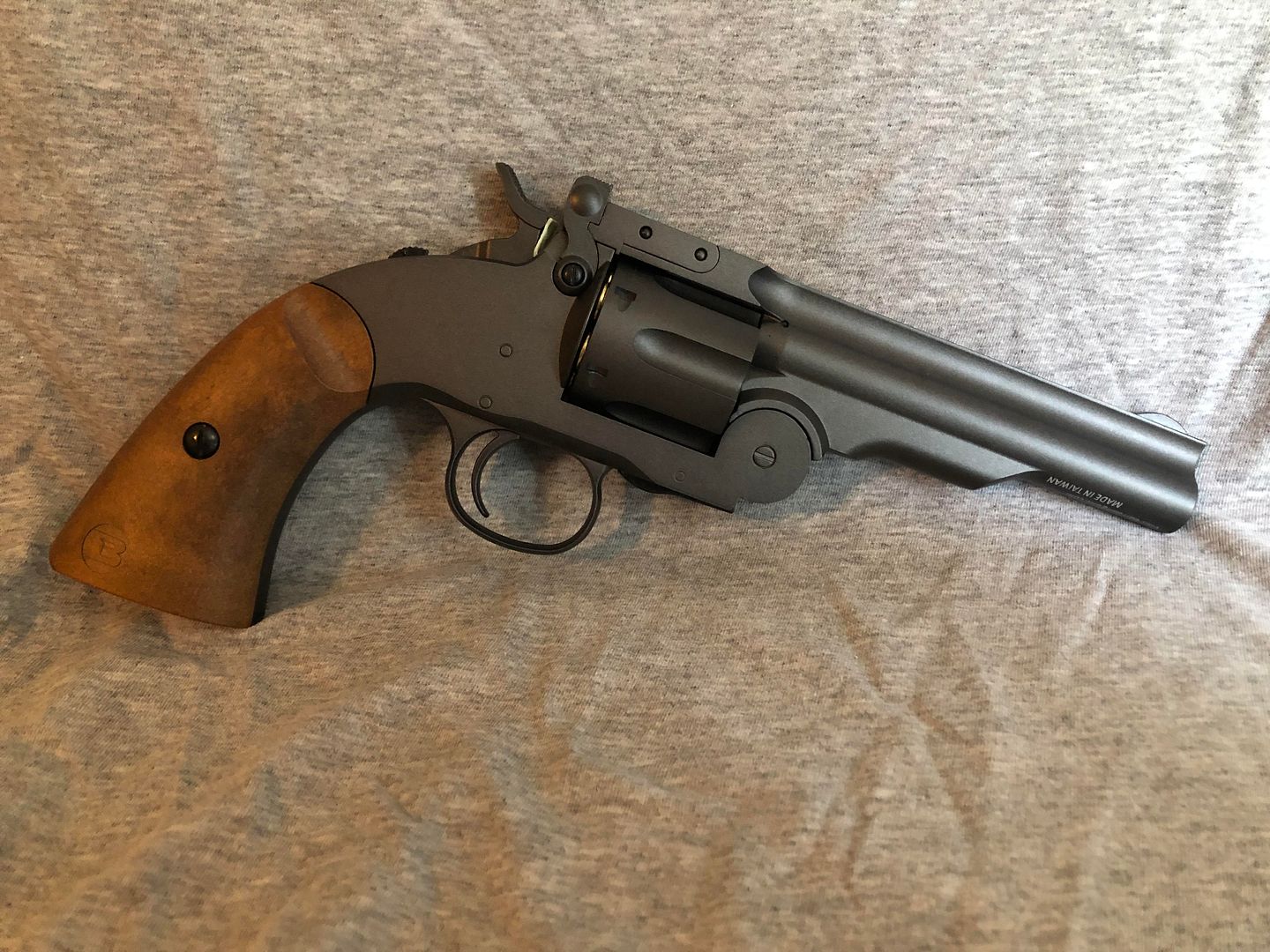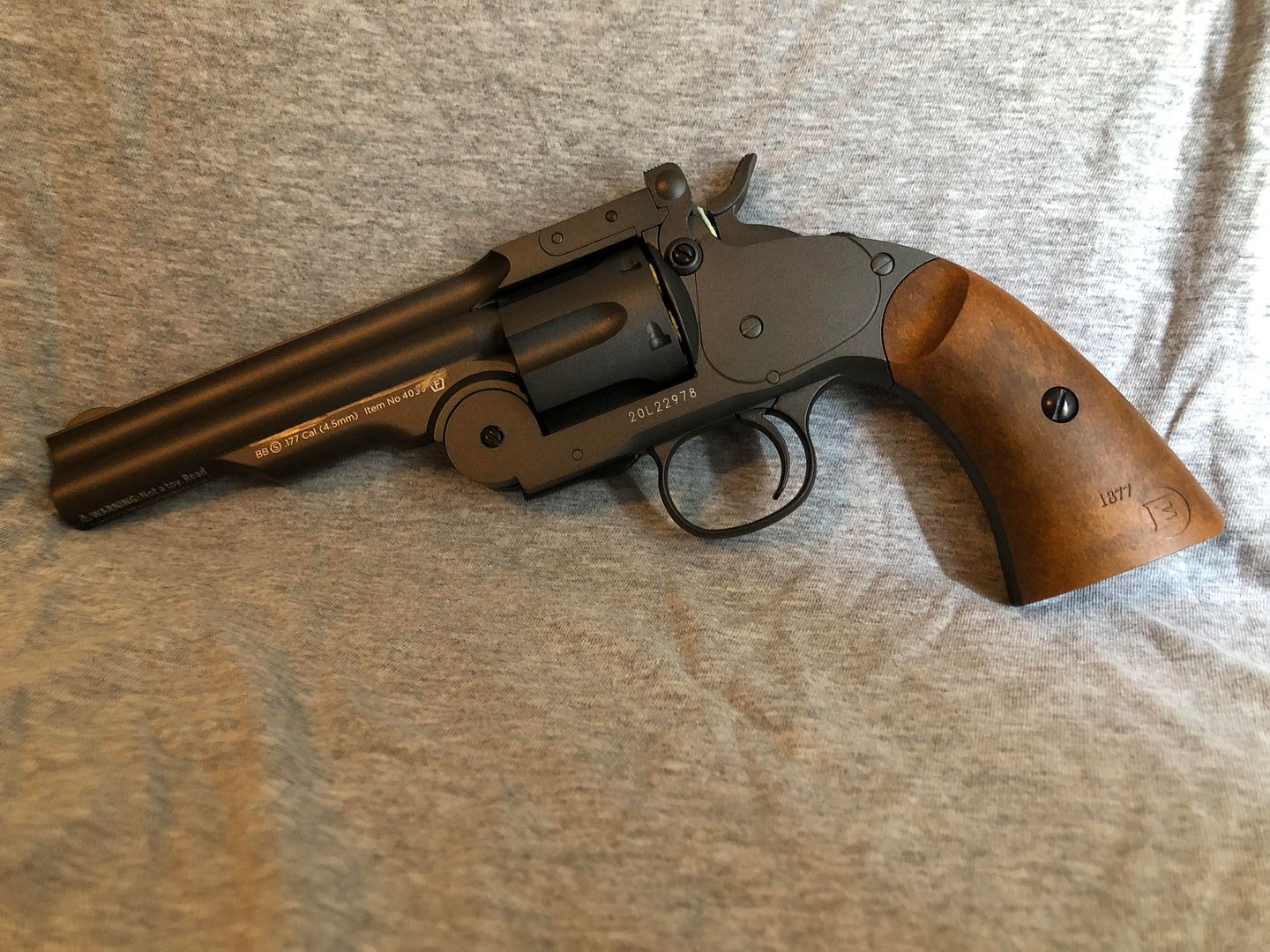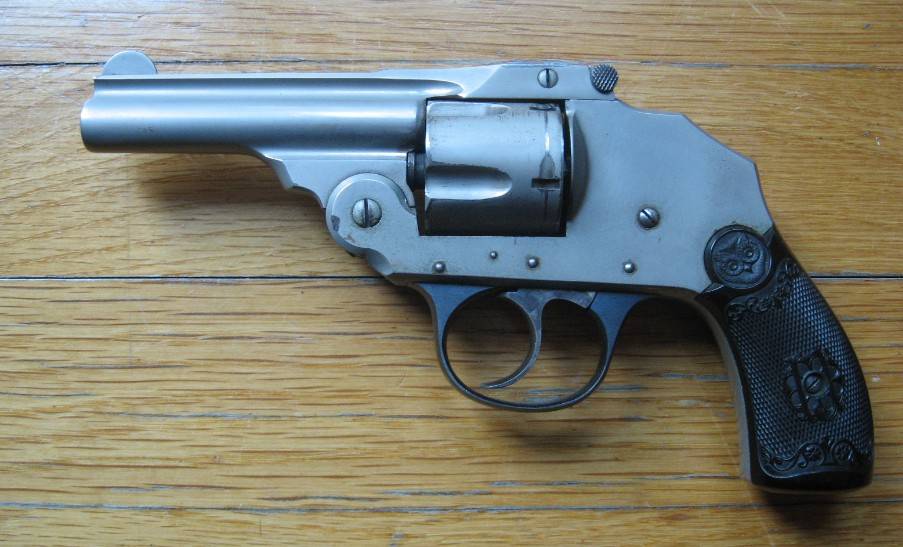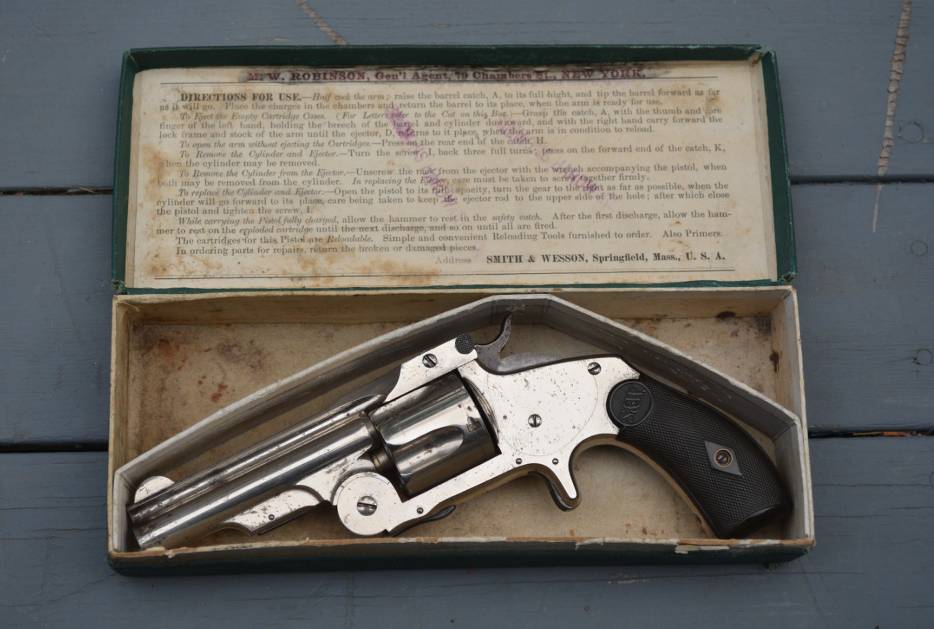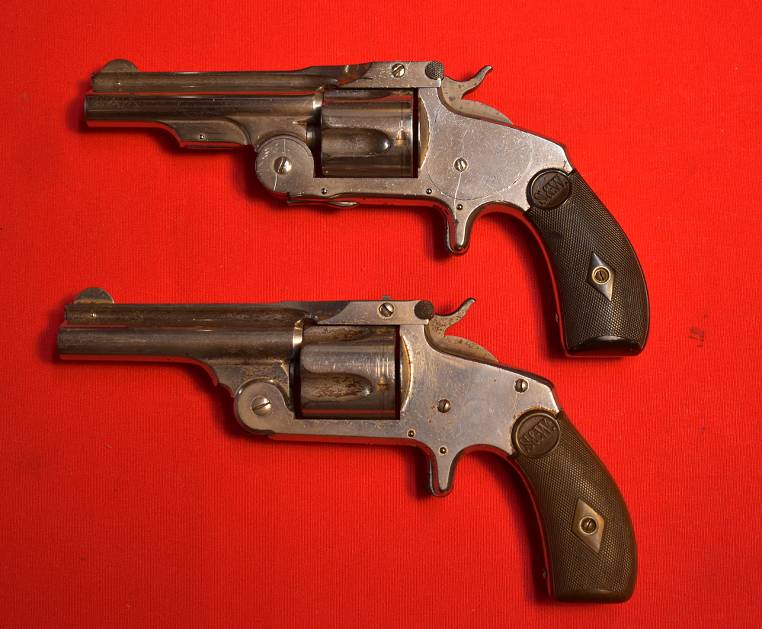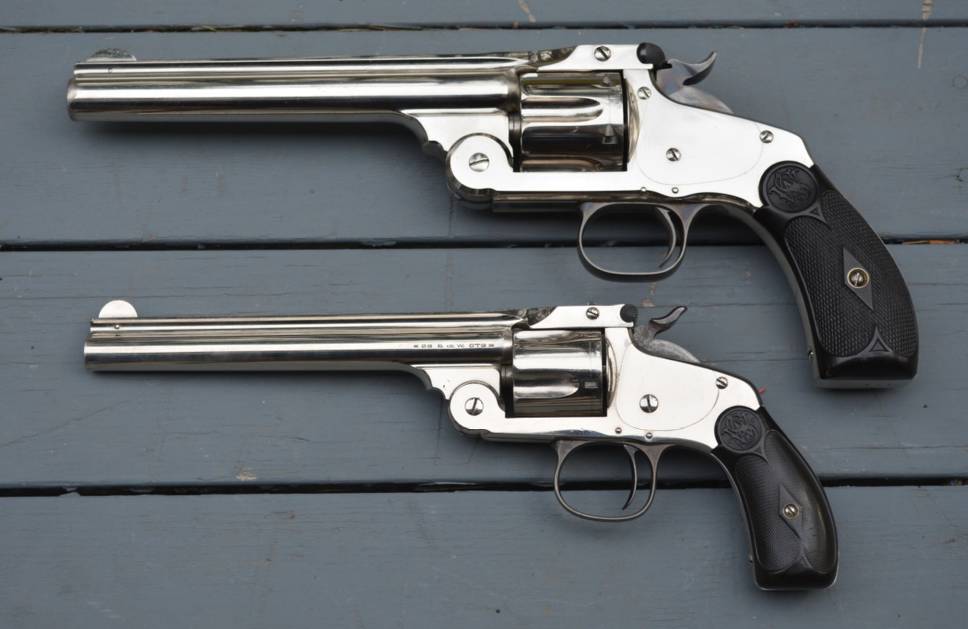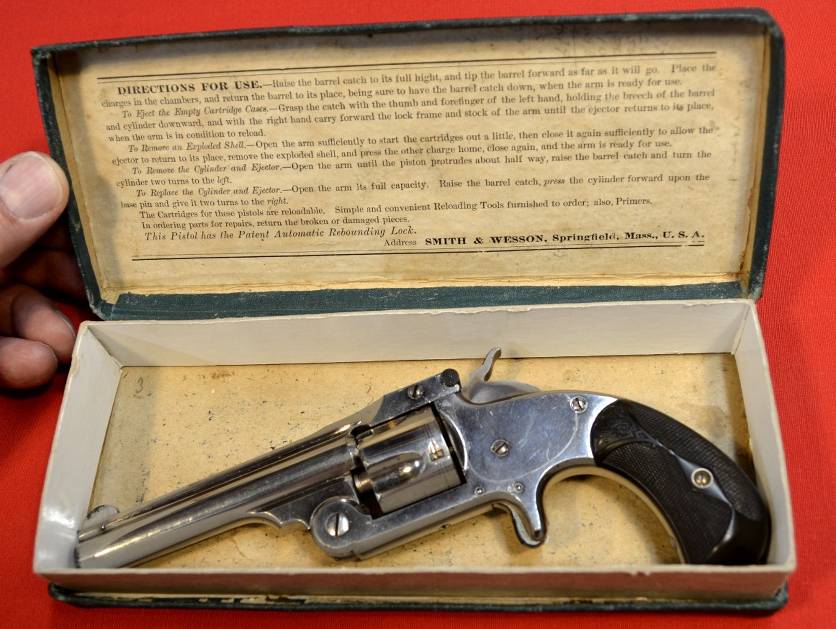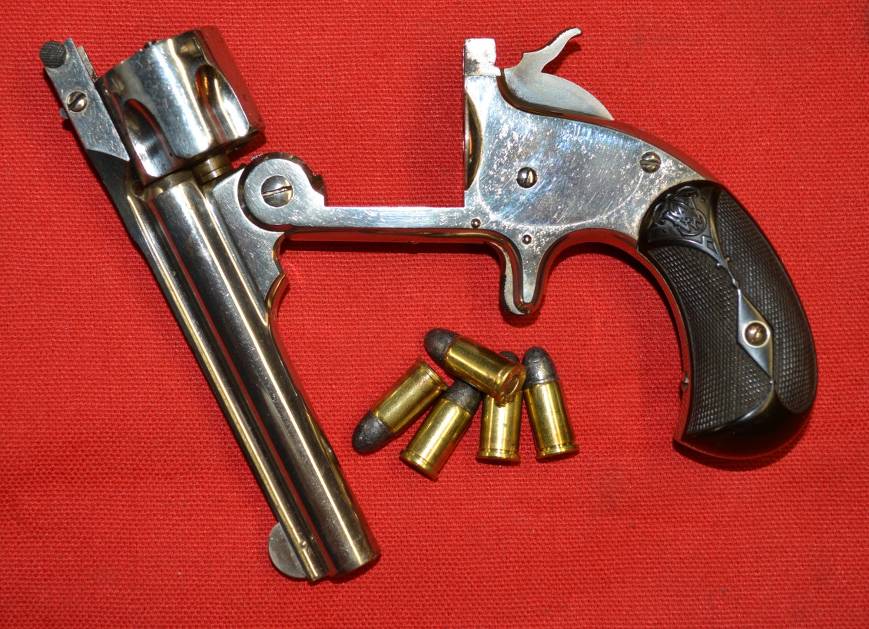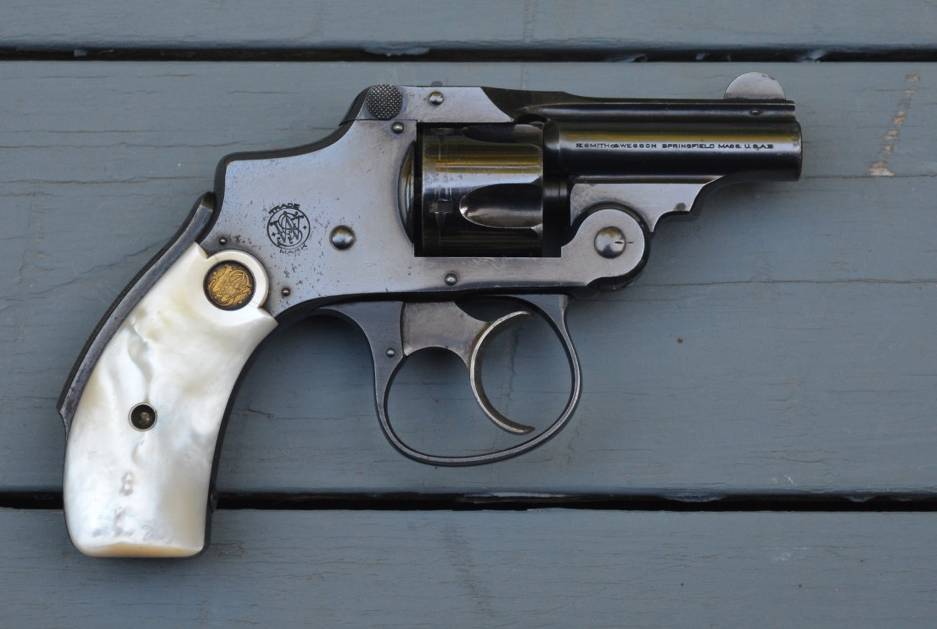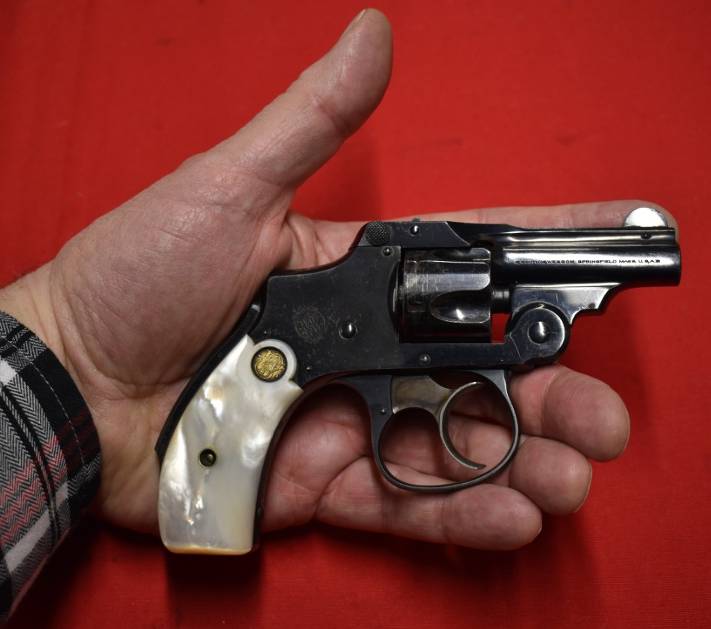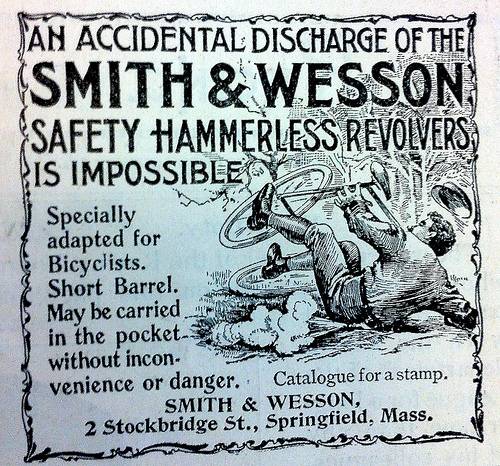Top Breaks.
We will start with the big Smith and Wesson #3 top Breaks.
The Rollin White patent, which gave S&W exclusive rights to manufacture revolvers with bored through chambers, was due to expire in 1869. White tried to renew the patent, but that is another story. Smith and Wesson was convinced that once the White patent expired, Colt, Remington, et al would be ready with designs employing cylinders bored through that could be loaded with cartridges from the rear. So they went to work designing a truly revolutionary revolver. It was a Top Break, meaning that to reload the barrel and cylinder were rotated down. The new revolver employed an automatic ejection feature. As the revolver was broken open, the extractor rose up lifting the empty cartridges. As the barrel reached its full rotation, the extractor snapped down. In theory, the empties would be ejected, but live ammo with bullets still attached would fall back down into the chambers. I say "in theory" because in my experience ejecting the empties was helped by rotating the revolver to the side as the ejector snapped down, allowing the emptied to fall free.
Interestingly enough, when the White patent expired, it took Colt several years to produce 'conversion' revolvers; Cap & Ball revolvers converted to accept cartridges, and the famous Single Action Army did not appear until 1873., When the SAA appeared, it was not as sophisticated as the S&W revolvers, the design was based on the older Colt Cap & Ball revolvers, and it could only be loaded one chamber at time, through a side loading gate.
The first of the S&W Top Breaks was the American Model, manufacutered from 1870 to 1872. Some of the American Models were chambered for 44 Rimfire Russian, but most were chambered for the 44 American cartridge that had a 'heeled' bullet, meaning the rear of the bullet was slightly smaller in diameter and fitted inside the cartridge case. The outer diameter of the heeled bullet and the cartridge case were the same.
This is not an American Model, it is a First Model Russian. Externally the same as the American Model, but chambered instead for the 44 Russian cartridge. (Actual American Models are too expensive for my pocketbook.) This one has had the barrel cut down a bit, and an old coin substituted for the front sight.
My First Model Russian broken open with 44 Russian ammo.
A Second Model Russian, chambered for 44 Russian ammunition. Note the distinctive shape of the frame, including the pointed 'knuckle' above the grip and the charcteristic spur on the trigger guard.
The Russian Model broken open with the extractor raising the empties, before it pops back down.
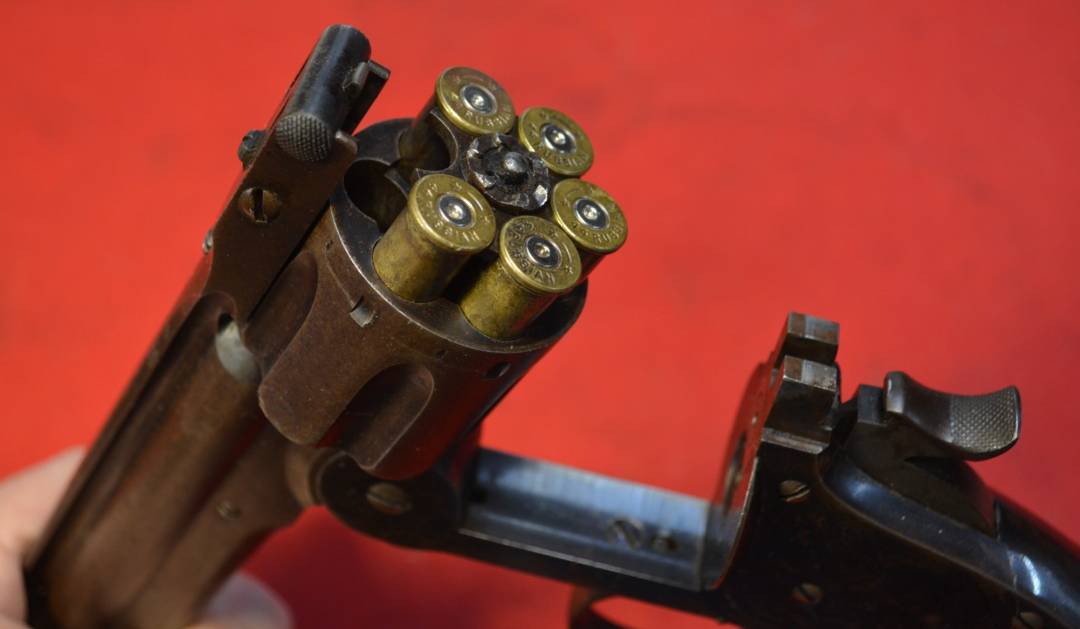
Unlike the 1st Model Russian, the 2nd and 3rd Model Russians shared the features of the large, pointed knuckle above the grip and the spur on the trigger guard. These were features the Russians insisted on. The knuckle was there to prevent the revolver from rotating in the hand during recoil, and it did this very well. Unfortunately, in my experience cocking the hammer required moving the hand up so the palm was in contact with the pointy knuckle. Then regripping was required to position the hand below the knuckle. If the revolver was fired with the palm of the hand in contact with the knuckle, recoil drove the point into the palm and it hurt, even with relatively mild recoiling 44 Russian ammunition. I have heard many explanations for the spur on the trigger guard, most of them do not hold water. I think the Russians just wanted it there as a European style embellishment. In fact, the spur was sawed off the trigger guard of many Russian revolvers in the Old West.
The Schofield Model. Six shots, chambered for the 45 Schofield cartridge. This one is a First Model and shipped in 1875. Note the distinctive frame mounted, serpentine shaped barrel latch.
Colt had procured contracts with the Army for the Single Action Army in 1873, chambered for the 45 Colt cartridge. Smith and Wesson did not want to miss out on lucrative government contracts but the Army required a 45 caliber cartridge. S&W was busy producing the Russian Models, eventually shipping over 150,000 to Russia, Turkey, and Japan, which were chambered for the 44 Russian cartridge. It would be no problem to open up the bore of the barrel and cylinder from 44 to 45, but the cylinders of all the S&W #3 Top Breaks were not long enough to accommodate the 45 Colt cartridge. S&W did not want to retool for longer cylinders and frames to fit a longer cylinder. A compromise was reached with the 45 Schofield cartridge; 45 caliber but short enough to fit the 1 7/16" long cylinders of a #3 revolver.
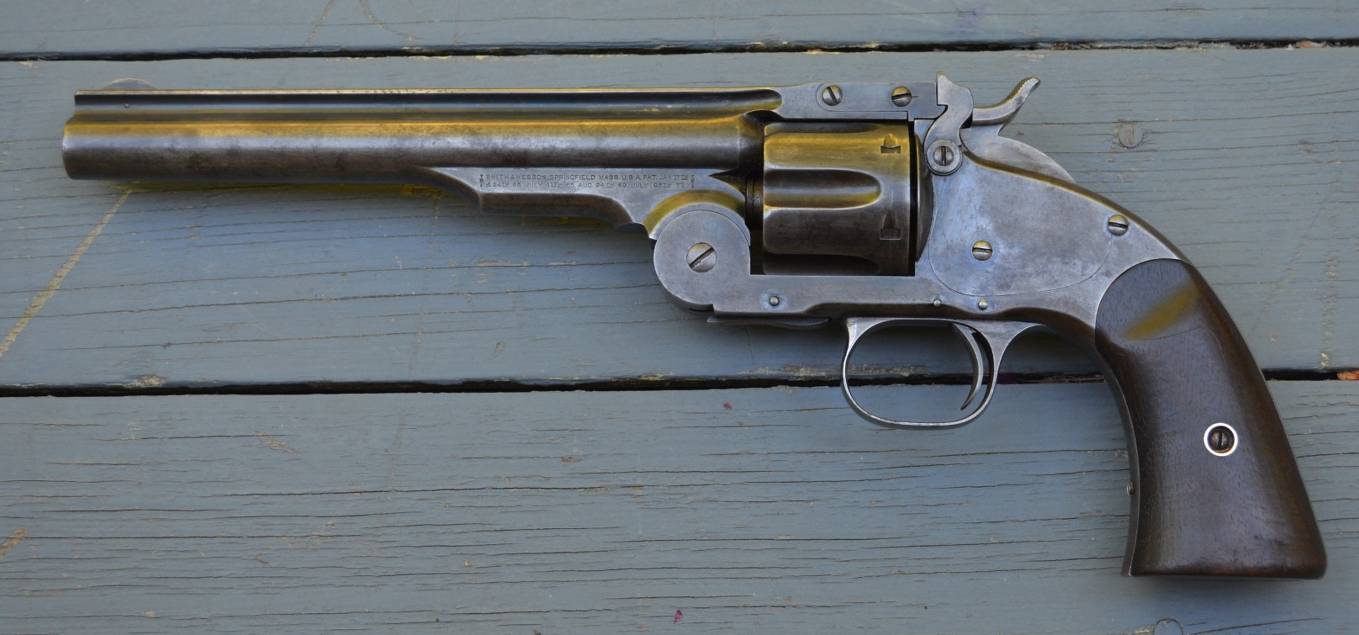
The Schofield Model was only manufactured from 1875 until 1877 in two models, and a total of only about 9,000 were made. The Colt SAA could interchangelbly fire the longer 45 Colt ammunition or the shorter 45 Schofield ammunition, but the Schofield model could only chamber and shoot the shorter Schofield round. This photo compares 45 Colt and 45 Schofield ammunition. The longer rounds are 45 Colt, the shorter rounds are 45 Schofield. The copper cased rounds in the center of the photo are the original Benet primed rounds, the two outer rounds are my own reloads. It has long been speculated that the 45 Colt ammunition was accidentally shipped to units armed with Schofield revolvers, but I have never found any documentation to back that up. Regardless, by 1878 the Army had surplussed out all the Schofield revolvers, many of them ending up in the Old West. Several hundred had their barrels shortened to 5" and sold to Wells Fargo.
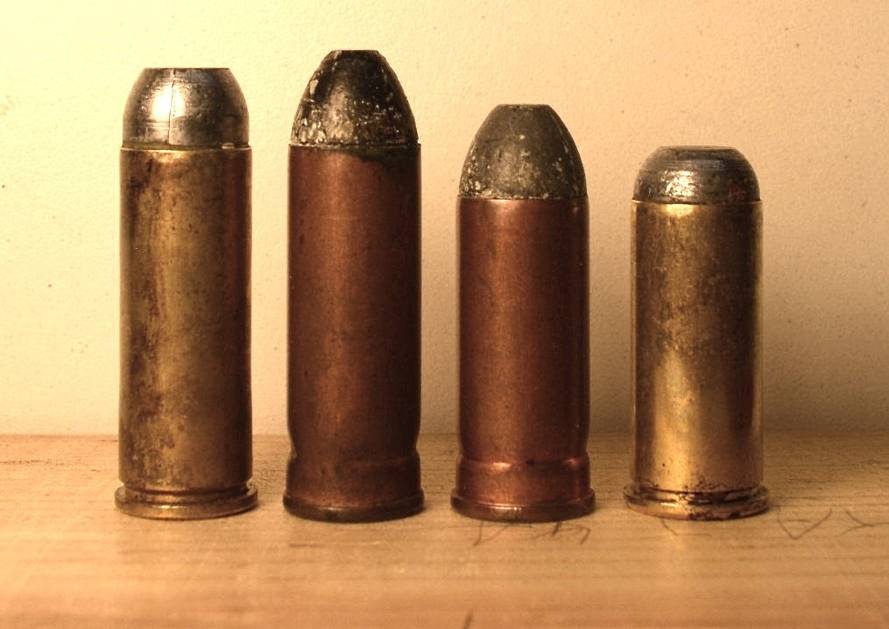
The frame mounted barrel latch of the Schofield model was unique to this model. Col George Schofield had been working on modifying #3 latches on American Models around 1871. His objective was to make it easy for a mounted cavalryman to break open his revolver with one hand. The latches on the American and Russian models required two hands, one on the frame and the other reaching up to unlatch the barrel and rotate it down. Schofield's improvement allowed a mounted cavalryman to unlatch the revolver with one hand, while holding the reins with his other hand. He would sweep the barrel against his leg, opening the revolver and ejecting the empties. A skilled rider could then reload and snap the revolver shut again. Schofield patented his latch. When S&W began producing the Schofield model in 1875, they had to pay a royalty to Schofield for his patented latch. Daniel Wesson instructed his engineers to come up with an alternative latch that got around Schofield's patent, but by the time production ended in 1877 they had not come up with an alternative.
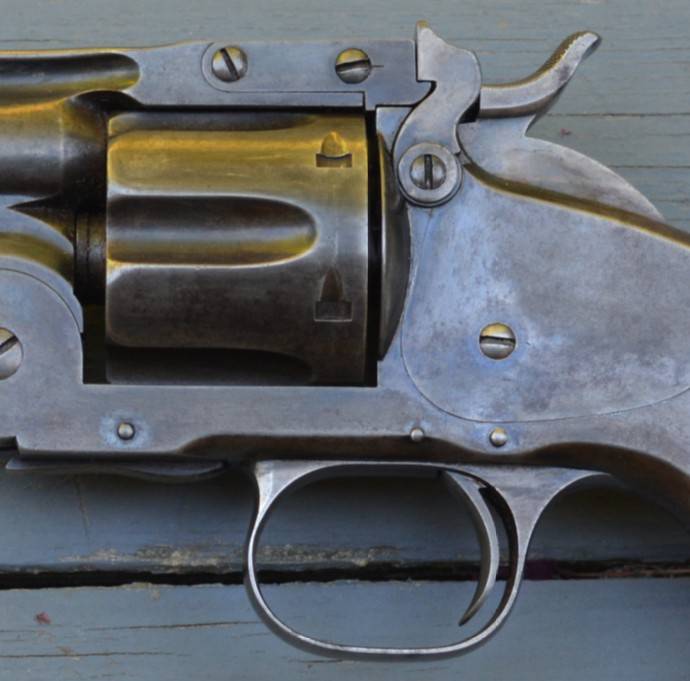
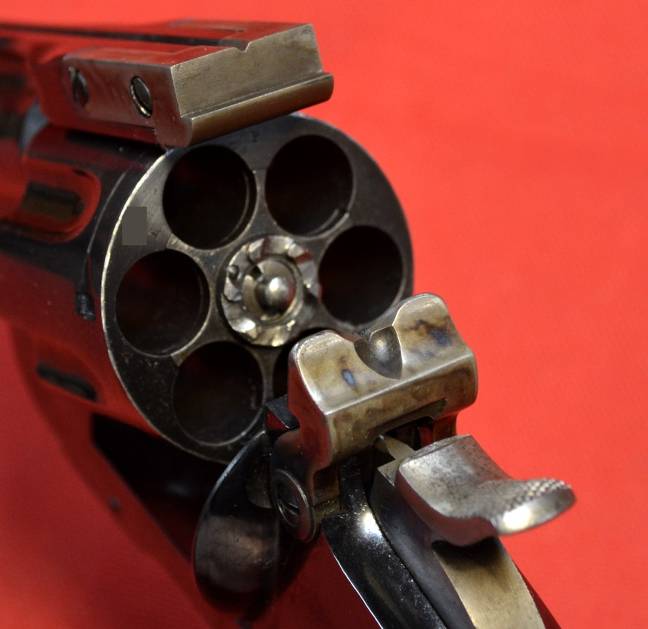
The Smith and Wesson New Model Number Three. The finest of all the Smith and Wesson #3 Top Breaks. Chambered for 17 different cartridges, but 44 Russian was most common. Cataloged from 1878 until 1908, this one shipped in 1896. Note the reduced knuckle on the grip, and the return to the older style, barrel mounted barrel latch.
This one is chambered for 44 Russian, but of course I only shoot it with ammunition loaded with Black Powder.
One other note. All of the revolvers posted here are built on the large #3 sized frame. But notice that all have very distinctive shapes. As Roy Jinks once said, "all Schofield revolvers are Number Threes, but not all Number Threes are Schofields.
Only ten images are allowed per post, I will have to post photos of the 44 Double Action in a little while.


